Lumen Blood Vessel (FSI & Non-Newtonian), CFD Simulation Ansys Fluent Training
$270.00 $135.00 Student Discount
- The problem numerically simulates Lumen Blood Vessel using ANSYS Fluent software.
- We design the 3-D model by the Spaceclaim software.
- We Mesh the model by ANSYS Meshing software, and the element number equals 356794.
- We perform this simulation as unsteady (Transient).
- We use the fluid-solid interaction (FSI) module to consider wall displacement.
- We use a UDF to define pulse velocity inlet and pulse pressure outlet.
- We use the Carreau model to define the blood as a Non-Newtonian fluid.
To Order Your Project or benefit from a CFD consultation, contact our experts via email (info@mr-cfd.com), online support tab, or WhatsApp at +44 7443 197273.
There are some Free Products to check our service quality.
If you want the training video in another language instead of English, ask it via info@mr-cfd.com after you buy the product.
Description
Description
In this project, a Lumen Blood Vessel (FSI & Non-Newtonian) has been simulated, and the simulation results have been investigated using ANSYS Fluent software. We perform this CFD project and investigate it by CFD analysis.
The three-dimensional geometry of this project has been produced with Spaceclaim software. The length of the computational domain is 164 mm, the height is 262mm, and the width is 5 mm.
The meshing of this project has been done with ANSYS Meshing software, and the total number of elements is 356794.
Also, due to the nature of the present problem, the transient solver has been used.
Lumen Blood Vessel Methodology
In this project, a blood vessel with its wall has been simulated using Ansys Fluent software. Also, the intrinsic FSI module within the Fluent has been enabled, and wall displacement is considered.
We have defined the pulse velocity using UDF for the inlet boundary condition, and for the outlet, the pulse output pressure is defined using UDF.
The blood is modeled as a non-Newtonian fluid using the Carreau model. Moreover, the laminar model is enabled to solve the fluid equations.
Lumen Blood Vessel Conclusion
At the end of the solution process, three-dimensional contours related to wall displacements and von mises stresses are obtained. As can be seen, blood flow inside the vessel exerts stress on the vessel walls.
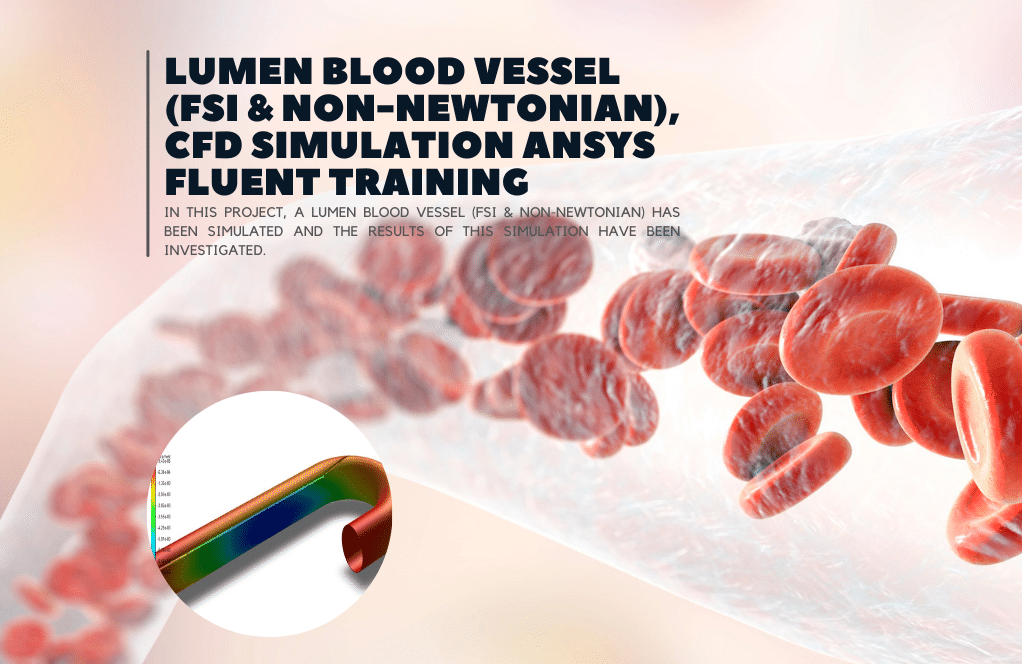
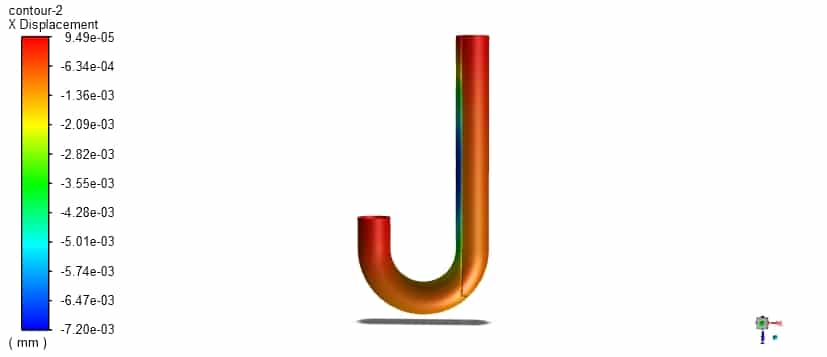
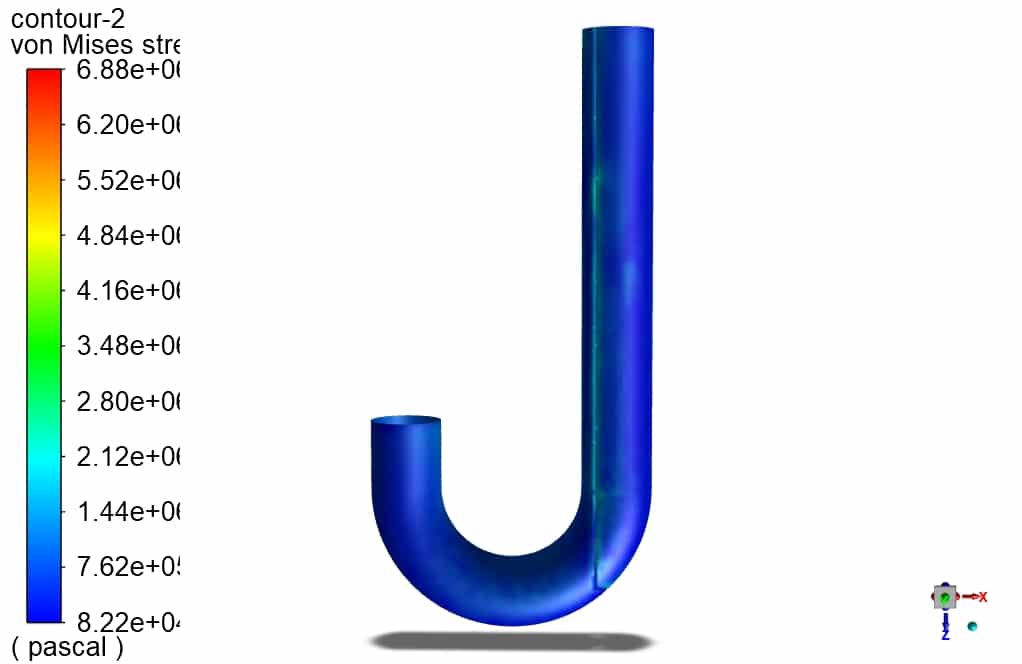
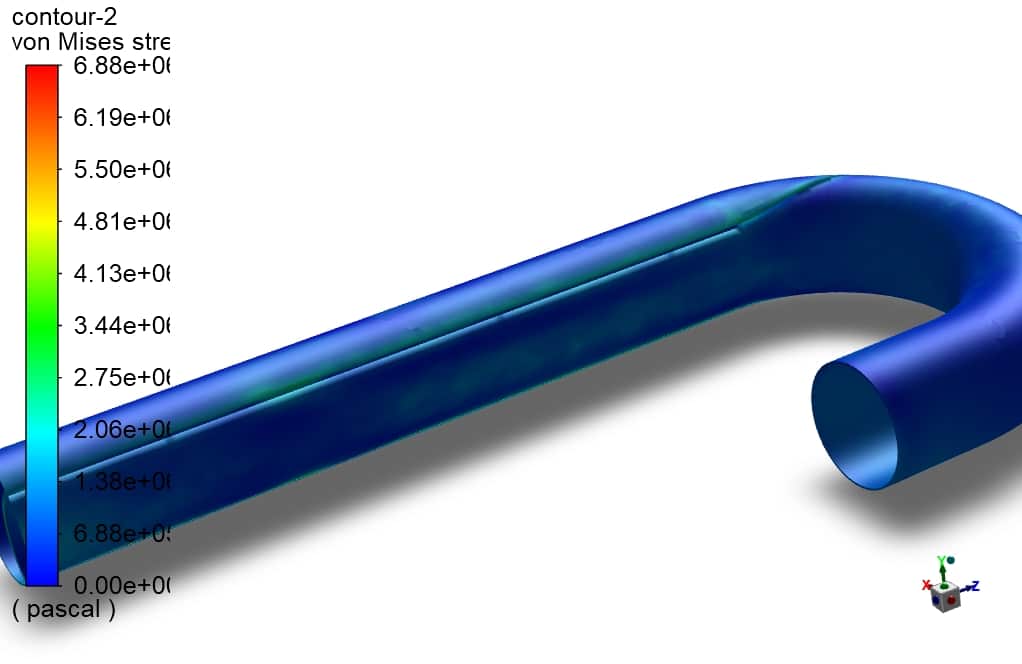
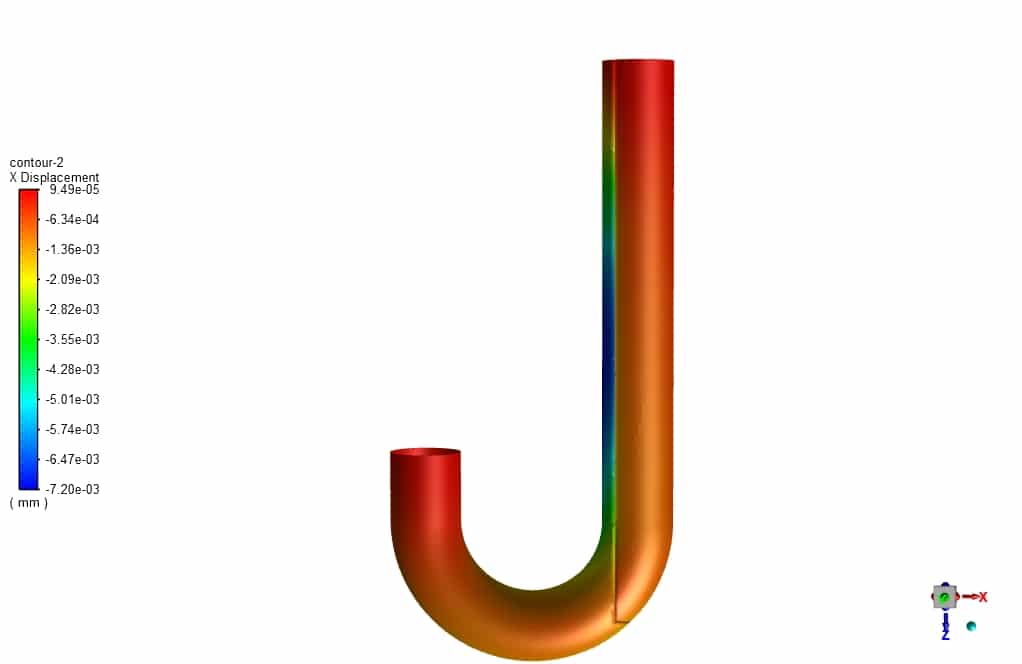
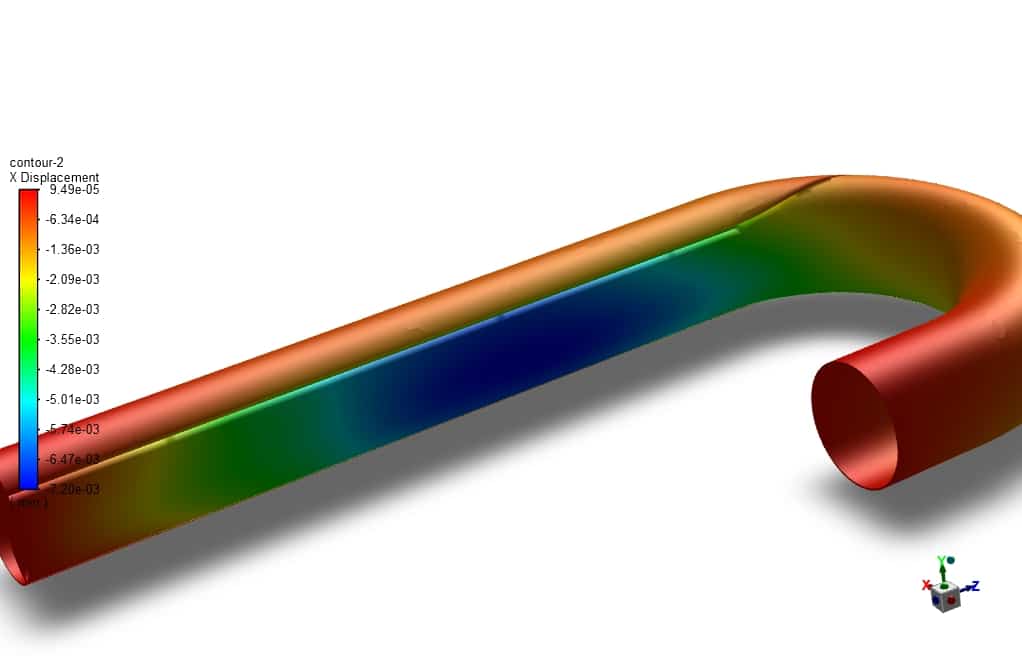
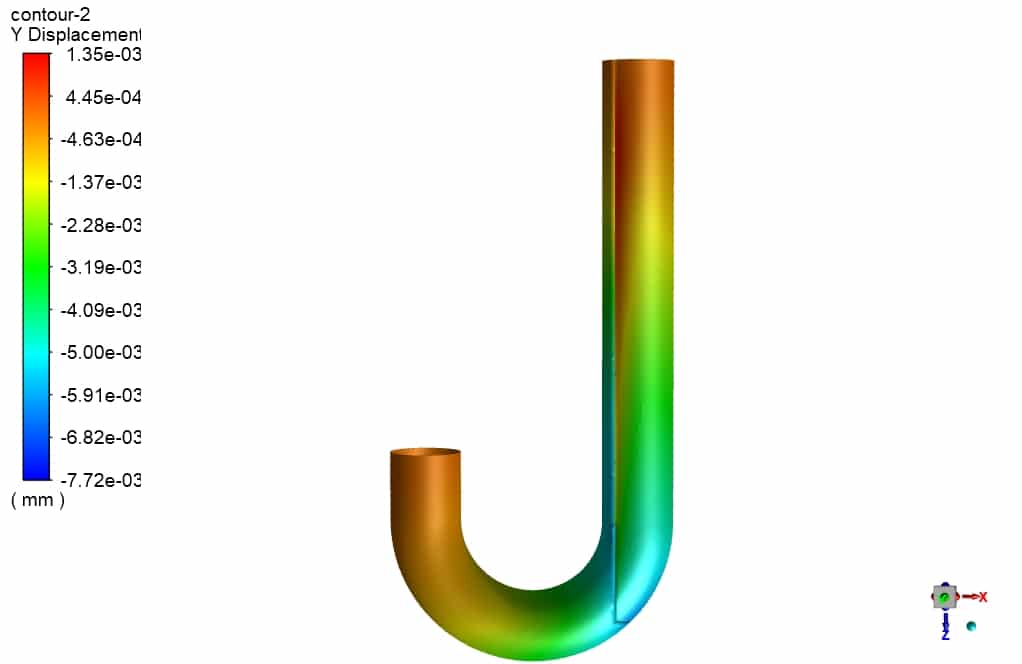
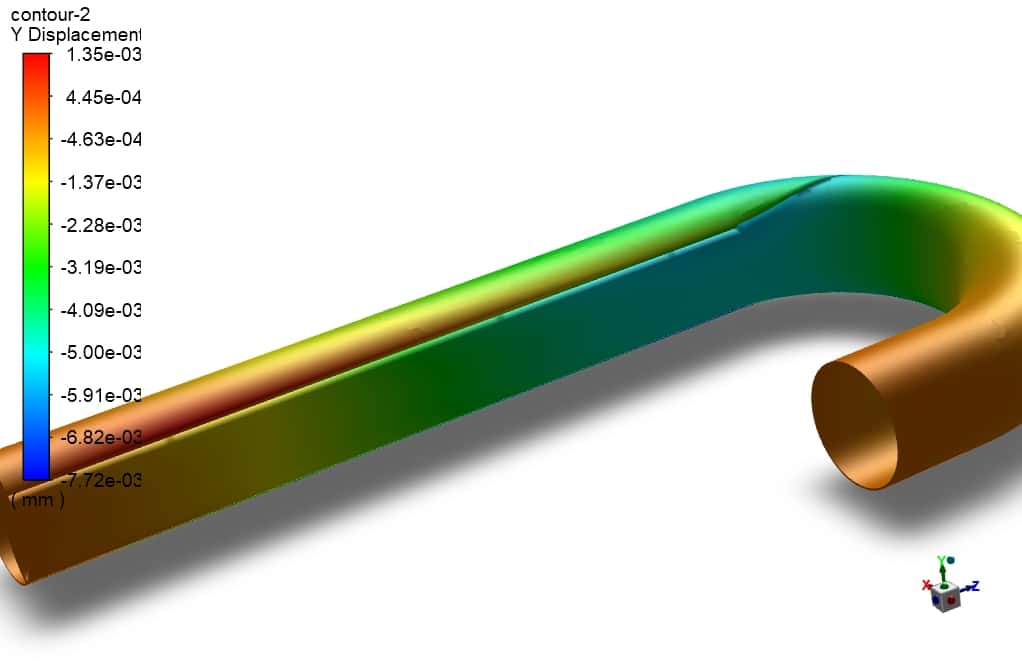
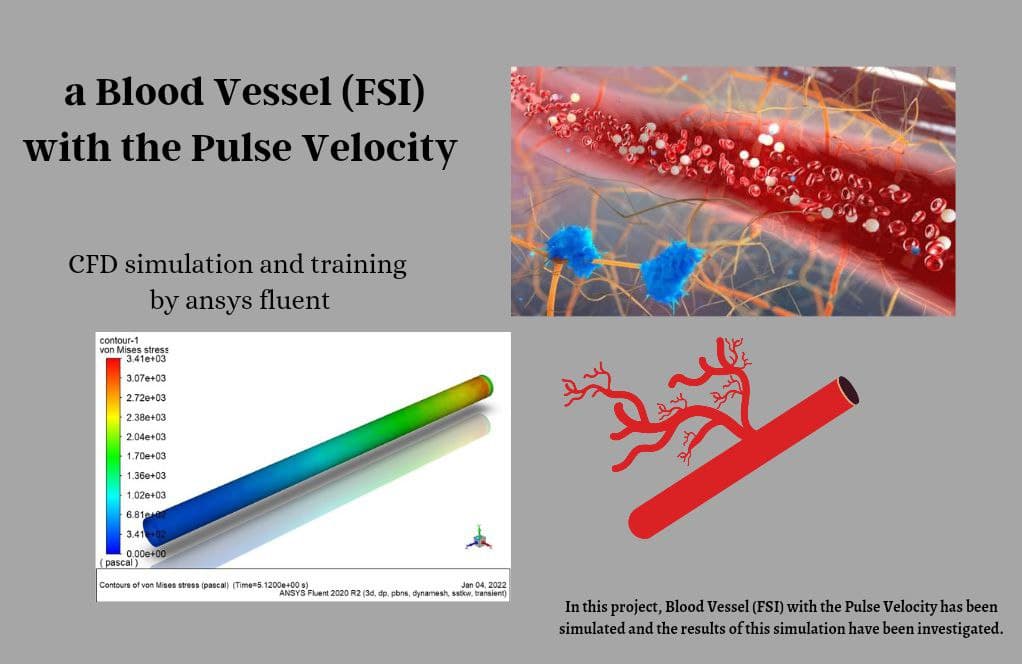


Julie Jenkins MD –
I found the case very interesting! Is the Carreau model crucial for the blood flow simulation?
MR CFD Support –
Yes, indeed, the Carreau model is crucial for accurately simulating blood flow in CFD analysis. This model takes into account the non-Newtonian properties of blood, meaning that the viscosity of the blood changes with different shear rates, which is important for realistic simulation of blood flow dynamics in blood vessels.
Lauryn Roob –
I found the project fascinating, especially how it utilized both the FSI and the non-Newtonian Blood model via Carreau. Could you please provide more details about the pulse velocity and output pressure UDFs and how they influence the accuracy of the simulation compared to constant flow simulations?
MR CFD Support –
In the simulation of biological flows like blood in a vessel, the use of pulse velocity and output pressure UDFs (User-Defined Functions) is essential for mimicking the pulsatile nature of blood flow due to the heartbeat. The pulse velocity UDF allows for the simulation of the changing velocity of blood over time as it’s pumped by the heart, while the output pressure UDF modulates the pressure conditions to reflect systolic and diastolic phases at the outlet. These UDFs improve accuracy by introducing a timed component to the simulation, creating a more realistic model of blood flow, which significantly departs from a simplified constant flow simulation and influences stress and deformation results on vessel walls. By accounting for this dynamic behavior, engineers and scientists can better understand the impact on the blood vessel walls and predict the vessel’s biomechanical response.
Prof. Leo Nicolas –
The simulation’s attention to blood as a non-Newtonian fluid seems imperative. How does this affect the analysis compared to assuming blood is a Newtonian fluid?
MR CFD Support –
The choice to consider blood as a non-Newtonian fluid rather than a Newtonian one is crucial for accuracy in biological simulations. Non-Newtonian fluids, like blood, have a viscosity that changes under different flow conditions, which affects the flow profile, wall shear stress, and overall hemodynamics. Incorporating these characteristics lends a more realistic representation of how blood behaves under physiological conditions. This has implications on factors like predicting arterial wall stress or understanding the progression of vascular diseases.
Charles Kirlin –
Absolutely thrilled with how the Ansys Fluent simulation allowed me to visualize the von Mises stress distribution due to blood flow on vessel walls! It really aids in understanding cardiovascular biomechanics.
MR CFD Support –
Thank you for your positive feedback! We’re glad that our product has provided valuable insights into cardiovascular biomechanics and helped you visualize complex stress distributions effectively.
Hadley Mann –
The training was fantastic! I’ve learned so much about simulating blood flow through vessels and the stress it causes on vessel walls thanks to the FSI and the detailed explanations provided. Looking forward to trying out similar projects on my own!
MR CFD Support –
Thank you for your kind words! We’re thrilled to hear that our ‘Lumen Blood Vessel CFD Simulation’ training proved to be educational and insightful for you. It’s great to know you’re planning to apply what you’ve learned to your own projects. If you need any further assistance or have more questions down the line, feel free to reach out. Best of luck with your future simulations!
Miss Virginie Armstrong –
The course seems really detailed. I’m curious, does it also discuss how to implement custom UDF for simulations like blood flow where non-standard boundary conditions are present?
MR CFD Support –
Yes, the course covers the application of User-Defined Functions (UDFs) to simulate non-standard boundary conditions such as pulsatile flow, which is especially relevant for replicating blood flow patterns in cardiovascular studies using Ansys Fluent.